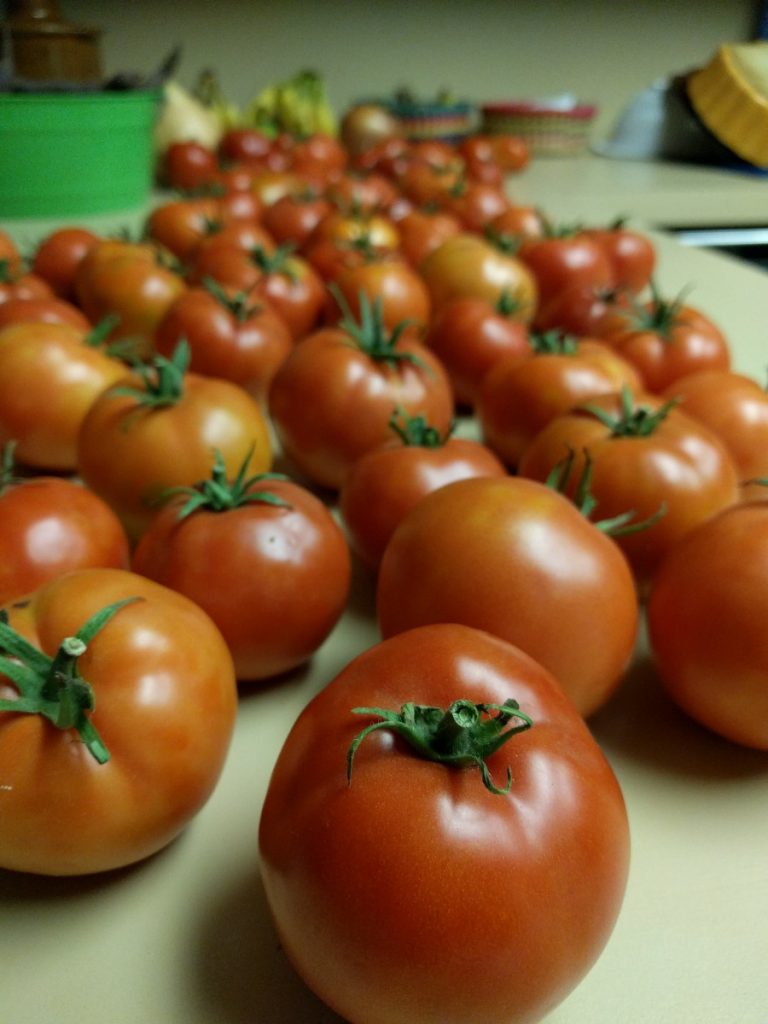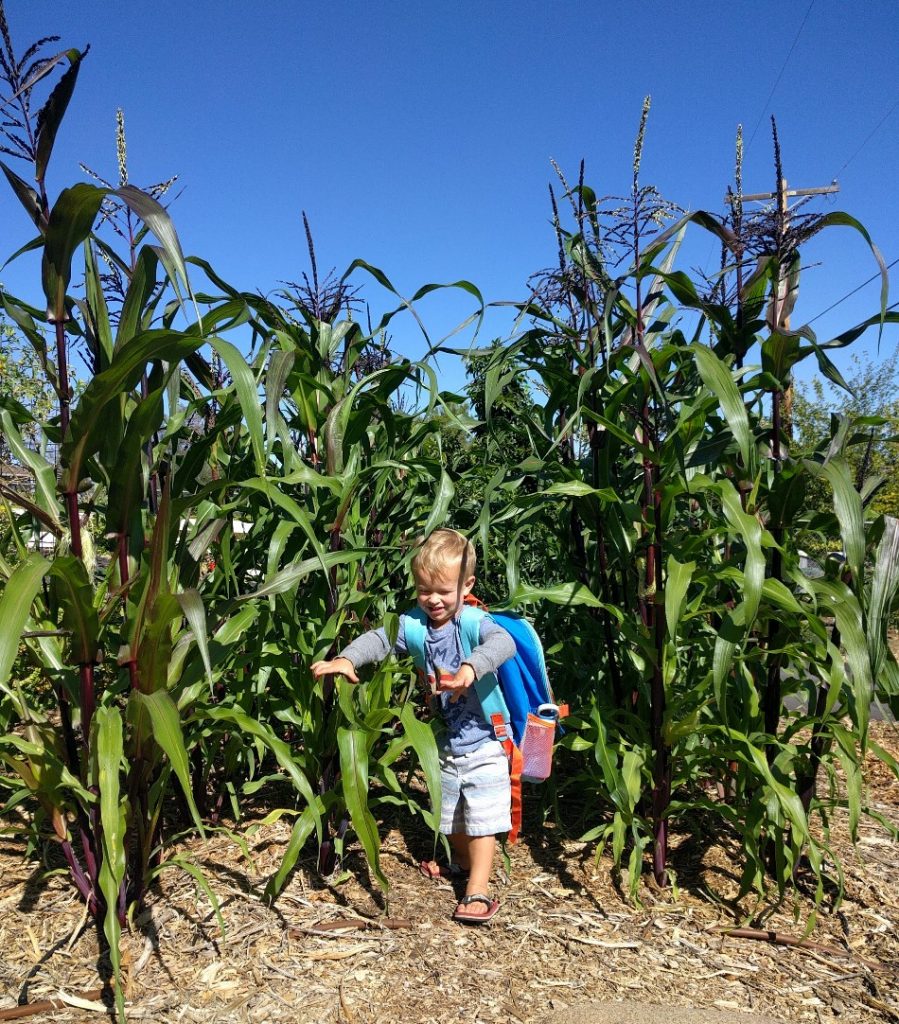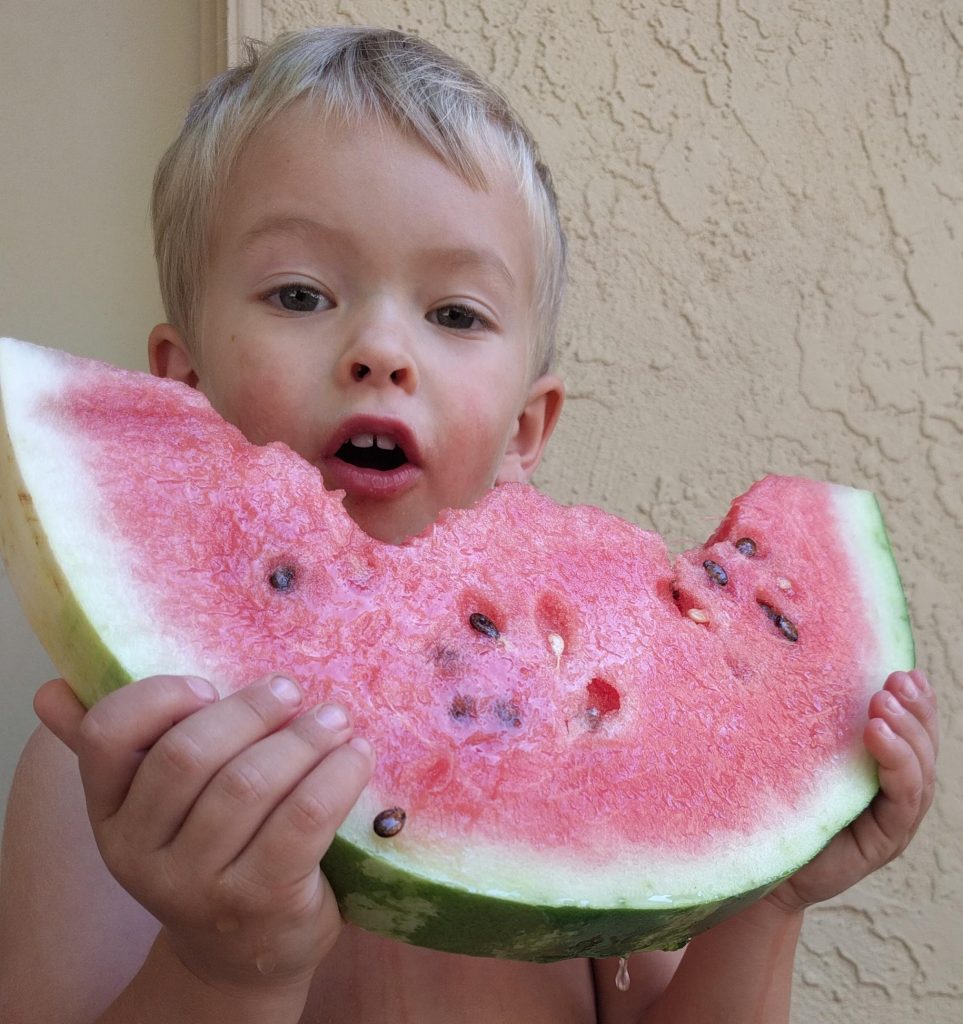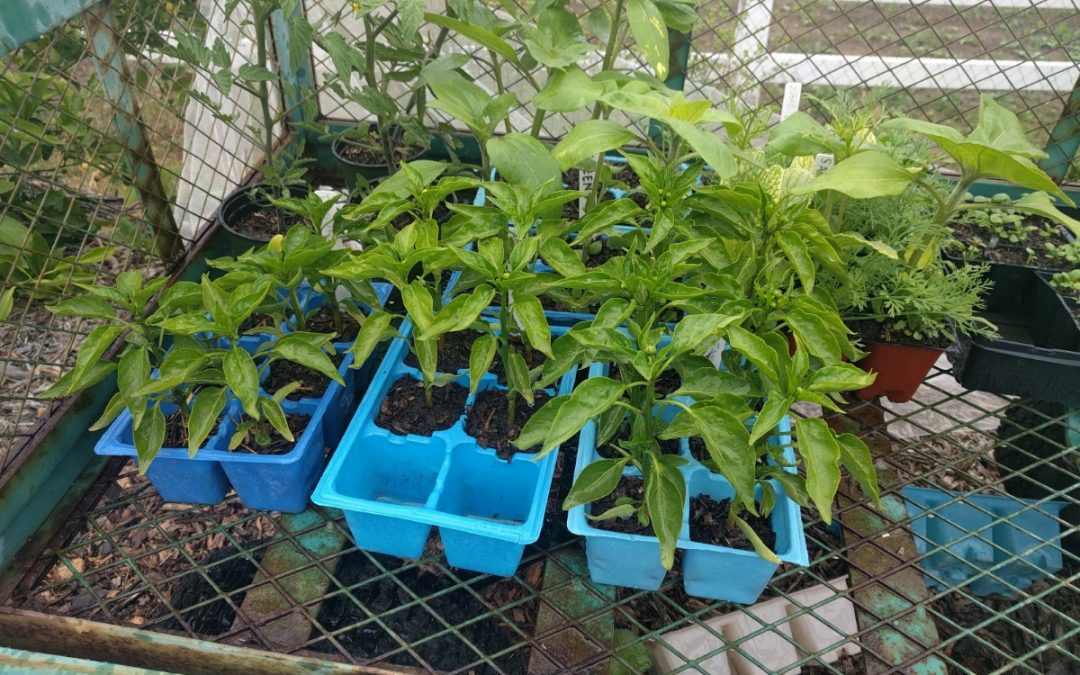Tomorrow is June 1 and my peppers are still not planted, and I don’t feel late in the least. On the other hand, my sister-in-law had bad luck with vegetable seeds she sowed recently and now she feels rushed to buy plants and get them in the ground pronto, and she should. She’s in Reno, Nevada.
Our warm season lasts long
In Reno, as in most of the rest of the country, there’s frost potential in October. Here in Southern California, we’re still picking tomatoes on Thanksgiving. These Champion tomatoes I picked in mid-November 2016:

And it wasn’t until August 23 of last year that I sowed the corn seeds which grew this fine patch:

We began eating the fresh ears of this ‘Martian Jewels’ corn in mid-November.
In short, our warm season is long so there’s no rush to get started.
Our warm season also starts early
I think we can be fooled by the fact that gardeners in other parts of the country feel a spring fever and rush to get their summer vegetables in because their growing season is shorter. And we can also be fooled by the fact that our spring warms up much earlier compared to other parts of the country, making it possible for us to plant summer vegetables earlier. Because of that, we feel like we should.
Got to show Aunt Terry in Michigan a photo of our tomatoes coming off the vine before the end of May!
However, just because we can doesn’t mean we always should.
Planting as early as possible is not always rewarded. Those tomato plants put in before the end of winter grew rather slowly and the first fruit in late May didn’t taste great and sometimes had blossom-end rot.
These days I more often wait until April to plant my first tomatoes because then I’m sure that they will grow rapidly, and it’s likely that their first fruit will be sweet. Plus, it gives garden space to winter plants like lettuce and carrots and peas for an additional month.

I used to plant my first peppers, melons, and squash vines earlier, not long after planting tomatoes and corn and beans. Always, they grew but they grew slowly. In early spring, the air and soil are warm enough for these plants to grow, but it is not warm enough for these plants to grow as fast as weeds, like they will starting in June.
And sadly, sometimes these early plants would be attacked by pests soon after planting. It might be snails, pill bugs, earwigs, or others, but early spring is a very pesty time, and when you plant the vegetables that these critters like in the early spring, they don’t grow fast enough to withstand the attacks well.
I’ve found that early-spring pests especially like to eat small seedlings — but also older leaves — of peppers, some melons (honeydew and cantaloupe), some squash, eggplant, cucumber, beans, and basil. (They don’t seem to care as much for tomatoes or corn.)
So waiting to plant until after it’s possible to plant can be wise. Last year, I waited all the way until June 27 to plant my melons. Right off the bat, they grew extremely fast, and we began harvesting in September:

When will my pepper plants come out of their trays? Probably soon. Probably before the solstice. Or by the Fourth of July. No rush.
You might also like to read my posts:




Greg, The leaves on my Burgundy Plum and Flavor Grenade Pluot trees (both starting their second year in the ground) have some kind of disease. The first year both the trees leafed out good, but some kind of worm began eating the leafs. I would pick the worms off and kill them, and my wife put some BT powder on the trees. Despite our efforts about half the leaves were eaten before the rest of the leaves naturally fell off in the fall. With all the rain we got this winter/fall, we thought the cause of the new leaves starting to grow on the trees, then browning and dying off, was because of the poor drainage around the trees, and the roots of the trees were drowning in water. Could this be the problem? Or is this some kind of bacteria cranker that is affecting the trees. If the later, is there something we can do to save the trees?
Hi Bob,
A lot going on there. There need be no mystery if drainage is your problem: stick your fingers into the soil where the tree roots are and see if it’s soggy.
I’d recommend searching the UC IPM website for information about diseases you think the trees might have: http://ipm.ucanr.edu/
In general though, I’ll note that I often see people water their fruit trees too much but rarely see people not watering enough. And watering too much causes lots of problems. So do be sure to eliminate that possibility before trying to deal with any symptoms that appear to be diseases.
I started some of my cannabis plants early and the damp cold weather made them sickly and weak. The ones I started later on in warmer weather flourished and outgrew the ones I started weeks before.
BTW I finally got some mango seedlings to survive past the stage where they normally sicken and die on me. I shot a video on how I germinate them and the ones that are flourishing… check it out: https://youtu.be/Ba_w_V1BIo8
I decided to plant some squash in the green house as well as outside this year because it’s been so cold. The green house one has some small fruit/flowers, nothing outside yet. My tomato plants outside are growing quite nicely, though. Long beans aren’t growing at all yet. On the note of being cold, my early peach varieties don’t seem to care about the temperatures as they’ve been so overloaded fruit is hitting the ground; good for the chickens, but not so good for me.
Dear Greg, this post is like a breath of fresh clean air to a suffocating gardener like myself! Instead of feeling happy to see everything blooming right now in March, I feel stressed because I am not ready to plant anything! The garden is a mess from winter and I need to prune everything and the weeds are overtaking everything. But, this post gave me pause. Hey, I can prepare the garden now, in March, and plant next month, even down to June I can plant melons. I am so happy and I thank you! I am gonna support you. I think I need your posts for my peace of mind. So very appreciative of your garden know how and the way you write is not tedious to read. Thank you!
Hi Rebekah,
“Not tedious”: I’ll take it!
I have so many weeds right now, and I’m feeling a little behind also. But it is really true that this time of year there is no benefit to rushing to plant the crops that like it warm (tomatoes, peppers, melons, etc.). If you plant them today, they’ll just sit in the ground and barely grow until it warms anyway.